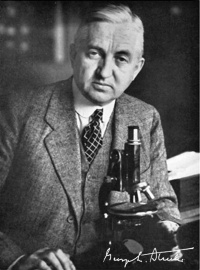Paper - Development of the interfore-brain commissures in the human embryo
| Embryology - 27 Apr 2024 |
|---|
| Google Translate - select your language from the list shown below (this will open a new external page) |
|
العربية | català | 中文 | 中國傳統的 | français | Deutsche | עִברִית | हिंदी | bahasa Indonesia | italiano | 日本語 | 한국어 | မြန်မာ | Pilipino | Polskie | português | ਪੰਜਾਬੀ ਦੇ | Română | русский | Español | Swahili | Svensk | ไทย | Türkçe | اردو | ייִדיש | Tiếng Việt These external translations are automated and may not be accurate. (More? About Translations) |
Streeter GL. Development of the interfore-brain commissures in the human embryo. (1907) Amer. J Anat. :56.
| Historic Disclaimer - information about historic embryology pages |
|---|
| Pages where the terms "Historic" (textbooks, papers, people, recommendations) appear on this site, and sections within pages where this disclaimer appears, indicate that the content and scientific understanding are specific to the time of publication. This means that while some scientific descriptions are still accurate, the terminology and interpretation of the developmental mechanisms reflect the understanding at the time of original publication and those of the preceding periods, these terms, interpretations and recommendations may not reflect our current scientific understanding. (More? Embryology History | Historic Embryology Papers) |
Development of the Interfore-brain Commissures in the Human Embryo
Wistar Institute of Anatomy, Philadelphia.
A morphological study of the corpus callosum and the commissure of the hippocampus, based on a series of wax-plate reconstructions of human embryos varying from 80 to 150 mm. in length. All three structures cross the median line in that portion of the brain wall developed from the lamina terminalis.
In 80 mm. embryos the corpus callosum consists of a round bundle of fibers lying directly on the commissure of the hippocampus, representing the condition found in non-placental animals. The succeeding growth consists in the lengthening of the fornix and caudal migration of the hippocampal commissure, the latter remaining in close relation to the caudal end of the corpus callosum, which in the meantime, by increase in number of fibers, has extended anterior to the anterior commissure and posterior so as to deck over the region of the third ventricle.
The formation of a cavity in the septum lucidum occurs in embryos of about 95 mm. The anterior or olfactory division of the anterior commissure does not enter the olfactory bulb, but is traced to the cortex dorsal to the bulb.
Cite this page: Hill, M.A. (2024, April 27) Embryology Paper - Development of the interfore-brain commissures in the human embryo. Retrieved from https://embryology.med.unsw.edu.au/embryology/index.php/Paper_-_Development_of_the_interfore-brain_commissures_in_the_human_embryo
- © Dr Mark Hill 2024, UNSW Embryology ISBN: 978 0 7334 2609 4 - UNSW CRICOS Provider Code No. 00098G



